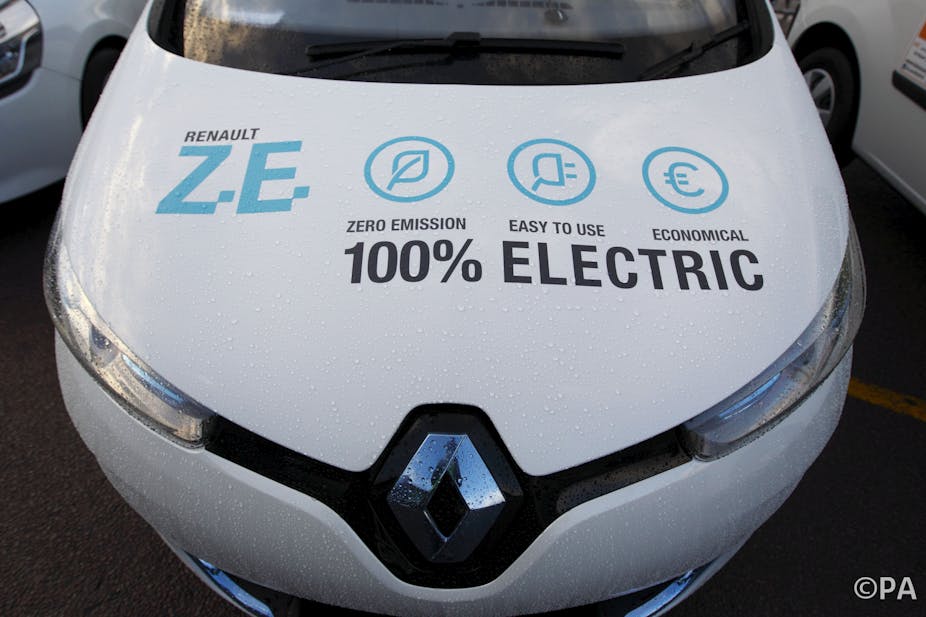The announcement came at New Year that David Cameron’s cabinet members might be about to trade in their limousines for electric vehicles. Such a move would make the UK government the world’s first to run a fleet of all-electric ministerial cars. This push adds to announcements from the end of last year that set a £10m prize for innovators who could produce a more efficient battery, and a dedicated £5m pot for testing the use of electric cars in the public sector.
This fresh approach builds on existing commitments of £400m put aside to encourage consumers to buy electric vehicles, the centre-piece of which was the plug-in car grant introduced in 2011 that allowed buyers to claim back 25% of the value of a new electric car, up to a limit of £5,000. However, less than a third of that pot has been spent as consumers were reluctant to buy. It’s made the government’s supposed “year of the electric car” a bit of a damp squib.
Little spark in the electric market
A little over 5,700 cars have been funded through the grant since it began, which is about one in every 1,000 cars sold in Britain. In addition to funding batter-powered electric vehicles, the grant also funds hybrid electrics vehicles. These have had more success than purely electric vehicles – the iconic Toyota Prius for example, which uses electricity to power the engine for parts of the journey (typically, the start), and conventional fuel for the majority.
In terms of total cars on the road, the UK has 4,100 wholly electric and 125,300 hybrid electric cars on the road, from a total of 31,998,700 – just 0.04%. Even adding another 3,200 electric or hybrid vans, this is way off even a single percent of the UK’s road vehicles.
So the UK lags far behind other European nations such as Norway, which boasts twice as many electric cars serving a population only a tenth the size (and a cold climate that can affect lithium battery life), or France with a similar population to the UK but nearly three times as many electric cars. In this case, the reason for such poor take-up in Britain may well lie with less generous incentives than in Norway, and/or a less comprehensive infrastructure compared to that in France.
Giving drivers a taste behind the wheel
In response to such differences in approach and success, my colleagues and I at Cardiff University’s Electric Vehicle Centre of Excellence have been studying consumer attitudes to electric vehicles, as part of the ENEVATE project. We gave volunteers, ordinary car drivers, the chance to drive electric cars for the first time in a series of pilot tests.
What did they think? The results show that consumers are generally keen to use electric cars. Some are attracted to the environmental benefits they offer, others by the excitement of getting to grips with a new technology. Most like the prospect of cheaper running costs by cutting out the ever-rising price of petrol or diesel. However, despite enthusiasm for the cars, there are two barriers that remain obstacles that prevent would-be electric car drivers from putting their hands in their pocket: the high initial purchase cost, and fears of the vehicle’s battery range.
So it seems that these reasons are still why the UK electric car market has stalled: too much risk and responsibility is being placed on the consumer. Electric cars are expensive – £25,000 for the Nissan Leaf, or £17,500 for the Renault Fluence and £13,500 for the Renault Zoe – even with the government’s grant. And consumers are especially wary of wasting money on a technology that might become obsolete with advances in battery technology, or changes in charging infrastructure that supersede the vehicles they’ve invested in.
Consumers also seem to resent having to spend so much on cars that are essentially less practical than their petrol- or diesel-powered equivalents. With maximum journey lengths of 100 miles on a single charge and recharging that takes, at best, 20-30 minutes (more likely several hours using the charging technology implemented in the UK), many rightly worry about the limitations and the need for meticulous route planning.
Best fleet forward
So perhaps the government’s new approach will offer a better way forward. Instead of simply offering financial inducements to make an expensive car marginally less so, they have realised that the best way of normalising the technology is to introduce it into car fleets.
Spreading the burden of buying and running electric vehicles to organisations rather than individuals seems the most sensible way of mainstreaming electric cars. Local authorities have taken the first steps in doing so, such as in Carmarthenshire and Swansea.
Were the UK cabinet to do the same, it would be a flagship use of electric cars that should set an example to others – the most high-profile fleet of all. Demonstrating to the public that electric cars can be made to work, while at the same time improving battery power and cost, might just be the most significant move for the electric car’s prospects in 2014.

